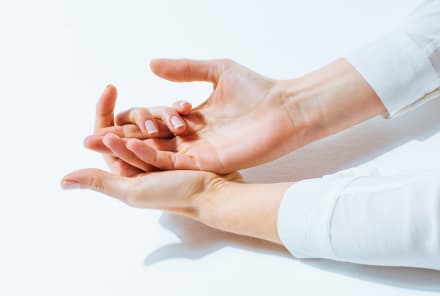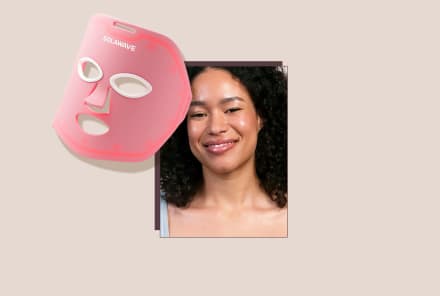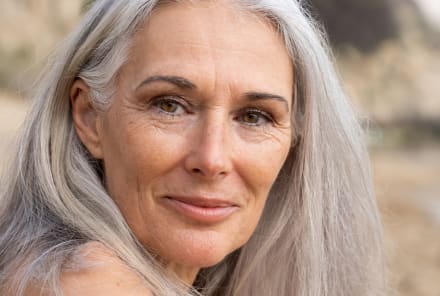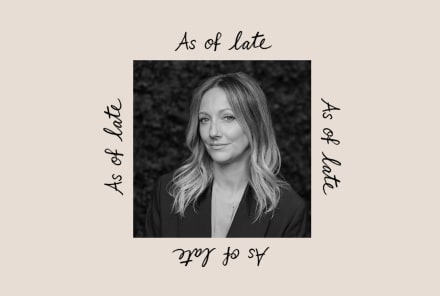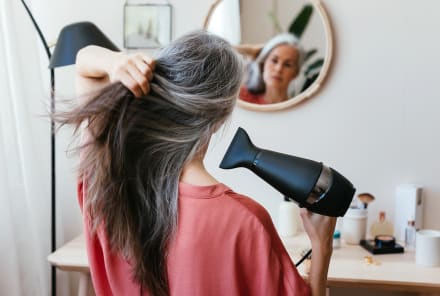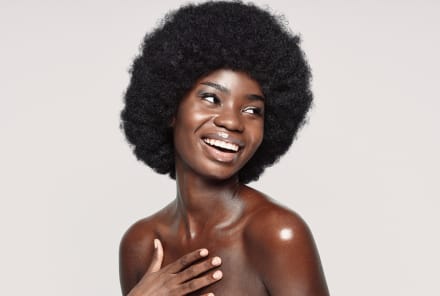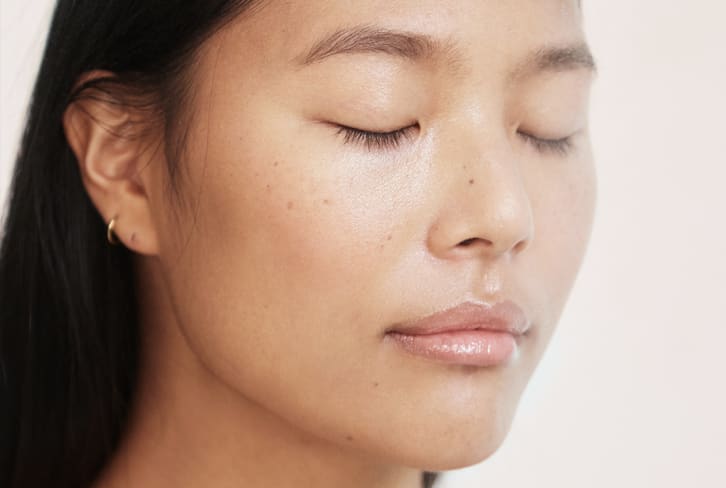Advertisement
Experts Explain The Top Mattress Certifications: What They Mean + Why They're Important

There's something reassuring about seeing a mattress with a bunch of certifications. These labels instill trust and make you feel good about your purchase—but what do they all mean, and which ones should we actually be paying attention to?
We spoke with Samantha Radford, Ph.D., an exposure scientist and owner of Evidence-Based Mommy, and Lindsay Dahl, a clean living expert, to break down what you need to know about how to decode labels on the hunt for your nontoxic sleep space.
Below, learn about the mattress certifications that matter so you can sleep at night knowing your bed is safe for you and the environment.
- Best for ensuring latex is certified organic: Global Organic Latex Standard (GOLS)
- Best for ensuring natural fibers are certified organic: Global Organic Textile Standard (GOTS)
- Best for ensuring textiles are tested for harmful substances: OEKO-TEX Standard 100
- Best for ensuring low levels of VOCs: Greenguard/Greenguard GOLD
- Best for protecting human health and the ecosystem: MADE SAFE
- Best bare minimum certification: CertiPUR-US
- Best for identifying a climate-friendly mattress company: B Corp Certification
- Best for ensuring a product is designed with circularity in mind: Cradle to Cradle
- Best for ensuring a low-emissions mattress: Climate Neutral
The top mattress certifications to look for:
Let's have a look at some of the common certifications that exist to regulate the use of unsavory chemicals in mattresses, so you can know exactly what you're buying.
Best for ensuring latex is certified organic: Global Organic Latex Standard (GOLS)
This certification means at least 95% of the natural latex used in your mattress is certified organic, with restrictions on the use of certain substances for the other 5%.
It also ensures the product is socially justifiable, environmentally friendly, and traceable throughout its value chain. It prohibits the use of substances such as phthalates, heavy metals, chemical flame retardants, formaldehyde, VOCs, and polyurethane foam.
Certified brands: Naturepedic, Avocado, My Green Mattress, Brentwood Home
Best for ensuring natural fibers are certified organic: Global Organic Textile Standard (GOTS)
This is the leading textile processing standard for organic fibers, backed by independent third-party certification of the entire textile supply chain.
This certification means that your mattress products are made of a minimum of 95% organic fibers. It prohibits the use of substances such as phthalates, heavy metals, chemical flame retardants, formaldehyde, VOCs, and polyurethane foam.
Certified brands: Naturepedic, Avocado, My Green Mattress, Happsy, Saatva, Earthfoam
Best for ensuring textiles are tested for harmful substances: OEKO-TEX Standard 100
This standard focuses on how textiles are processed and what dyes and finishes are used on them. Synthetic fabrics can be OEKO-TEX certified, and not all OEKO-TEX certified products are organic. But if a textile carries the label, you can be certain that every component (thread, button, zipper, etc.) has been tested for substances that could harm human health (such as heavy metals, flame retardants, phthalates, and formaldehyde).
GOLS, GOTS, and OEKO-TEX Standard 100 certifications are Radford's top recommendations, though they can often be pricier than the others.
Certified brands: Avocado, Birch, Brentwood Home, Keetsa, Earthfoam
Best for ensuring low levels of VOCs: Greenguard/Greenguard GOLD
Greenguard certification means that a mattress has been tested for specific chemical emission limits of phthalates, flame retardants, formaldehyde, and other VOCs.
Greenguard Gold includes health-based criteria for additional chemicals and has more stringent VOC emissions limits. It doesn't, however, guarantee that nonvolatile contaminants (such as lead or cadmium) aren't in your mattress.
Certified brands: Avocado, Birch, Brentwood Home, Naturepedic, Tuft & Needle
Best for protecting human health and the ecosystem: MADE SAFE
This certification means that the mattress has been screened to ensure that over 6,500 banned/restricted substances have been avoided or constrained, thereby eliminating the worst hazards commonly found in products used in our homes and daily routines. Certification requires manufacturing transparency and detailed disclosure of substances and specifications.
In Dahl's opinion, this is one of the most impressive certifications since it ensures a mattress is completely free of toxic chemicals and treatments.
Certified brands: Avocado, Naturepedic, Happsy, My Green Mattress
Best for safe(r) polyurethane foam: CertiPUR-US
This certification means that the polyurethane foam in your mattress is made without certain flame retardants, formaldehyde, lead, and other heavy metals, and it's low in VOC emissions.
In Radford's view, CertiPUR-US is the lowest-regarded certification on the list, for two reasons. "Firstly, it is administered by the Alliance for Flexible Polyurethane Foam, who likely has a vested interest in passing products, and secondly, it does not certify the entire mattress; it only certifies the foam inside the mattress," she says.
In other words, if a product has CertiPUR-US foam but also has a layer of vinyl, it likely will still off-gas phthalates and other potentially toxic chemicals.
Certified brands: Casper, Tuft & Needle, Leesa, Endy, Douglas
Best for identifying a climate-friendly mattress company: B Corp Certification
This certification measures a company's entire social and environmental impact. It ensures that a business is meeting high standards of verified performance, accountability, and transparency on factors from employee benefits and charitable giving to supply chain practices and input materials.
Dahl always prioritizes shopping with Certified B Corporations when possible. "While the B Corp logo doesn't mean a product is necessarily fully sustainable or nontoxic, couple that with MADE SAFE or Greenguard and you're going to be making a great choice," says Dahl.
Certified brands: Avocado, Savvy Rest, Leesa
Best for ensuring a product is designed with circularity in mind: Cradle to Cradle
This certification means that the safety, circularity, and responsibility of materials and products have been assessed across five categories: material health, product circularity, clean air and climate protection, water and soil stewardship, and social fairness.
Certified brands: Savvy Rest
Best for ensuring a low-emissions mattress: Climate Neutral
The Climate Neutral standard is focused on eliminating carbon emissions by making climate neutrality a priority for businesses and consumers. To become Climate Neutral Certified, a company must show that it is working to reduce the greenhouse gas emissions from making and delivering its products and compensate for them through carbon offsets every year.
Certified brands: Avocado, Brentwood Home
Why buy a certified mattress?
Many synthetic mattresses contain chemicals that are toxic, such as flame retardants, phthalates, and other volatile organic compounds (VOCs). According to Radford (and scientific research1), these chemicals can off-gas into the environment for years, meaning you'll be continually exposed to them.
VOCs, flame retardants, and phthalates all have subtle but potentially serious long-term effects on our health, and according to Radford, they primarily affect the endocrine (hormone) system2.
"Flame retardants have been nicknamed 'the new lead' given how toxic they are to the brain, hormone system, and organs like the liver," adds Dahl.
Though there is local legislation prohibiting some of these chemical additives, there are no nationwide bans in the U.S.
In the same way that the materials in some mattresses are harmful to human health, they also affect the environment once they're disposed of, Dahl notes. An estimated 20 million mattresses are thrown away each year in the U.S. alone, where "the same chemicals that leach into our homes, leach into landfills and the local water supply," says Dahl.
How do I know if my mattress is safe?
Check for flame retardants.
"First and foremost, consumers should ask the manufacturer to confirm that there are no chemical flame retardants used in the mattress," says Dahl, adding that there are safer options like wool barriers that have flame-resistant properties without harmful chemical exposures.
Some of the labels listed above allow you to forgo this step, as they certify that there are no chemical flame retardants in a product.
Look beyond synthetic foams.
Secondly, experts agree that ideally, consumers should choose a mattress made from something other than polyurethane foam (including memory foams), which are the primary source of toxic chemical exposure and off-gassing.
Alternatives include a combination of natural latex (if you don't have an allergy), cotton, kapok fiber, and/or wool.
If you do choose a mattress made of polyurethane foam, Radford recommends looking for one that is at least CertiPUR-US certified, though ideally, it would also be Greenguard GOLD certified.
Push brands to do more.
It's important to note that certifications aren't a one-and-done exercise; they need to be updated. Don't shy away from asking brands to see updated documentation if you want to be sure.
Finally, "We need more companies to get involved in asking Congress to pass legislation that will remove these toxic chemicals from all mattresses, leveling the playing field for people who can't afford safer mattresses or don't have the time to shop the market," says Dahl.
Expert favorites
The takeaway.
Now that you're armed with knowledge about the main mattress certifications, you can approach your next purchase as an informed shopper. A high-quality mattress is an investment piece—one you'll likely spend the next 10 years using—so by doing this extra little bit of due diligence now, you'll be able to rest easy for a while.
Watch Next
Enjoy some of our favorite clips from classes
Enjoy some of our favorite clips from classes
What Is Meditation?
Mindfulness/Spirituality | Light Watkins
Box Breathing
Mindfulness/Spirituality | Gwen Dittmar
What Breathwork Can Address
Mindfulness/Spirituality | Gwen Dittmar
The 8 Limbs of Yoga - What is Asana?
Yoga | Caley Alyssa
Two Standing Postures to Open Up Tight Hips
Yoga | Caley Alyssa
How Plants Can Optimize Athletic Performance
Nutrition | Rich Roll
What to Eat Before a Workout
Nutrition | Rich Roll
How Ayurveda Helps Us Navigate Modern Life
Nutrition | Sahara Rose
Messages About Love & Relationships
Love & Relationships | Esther Perel
Love Languages
Love & Relationships | Esther Perel
